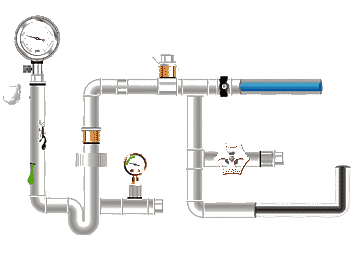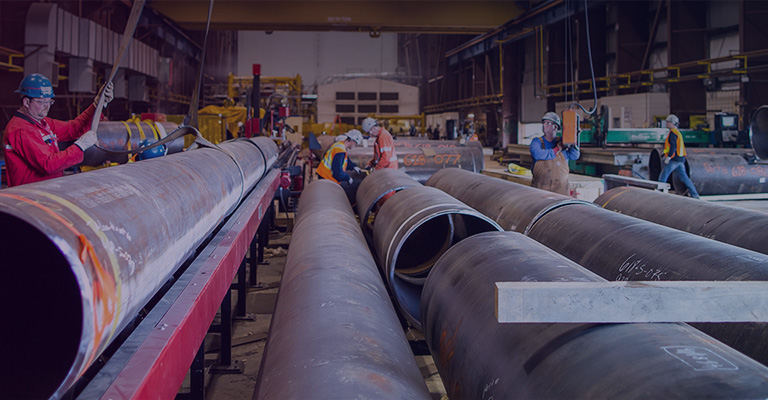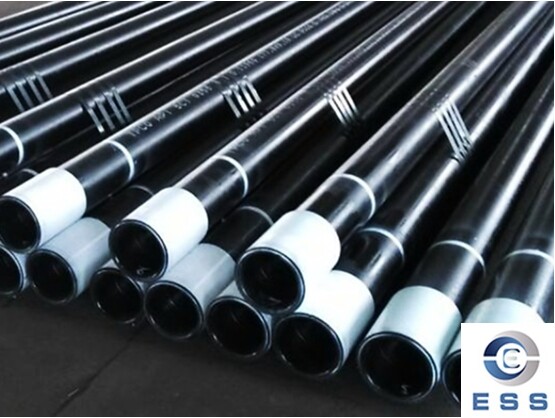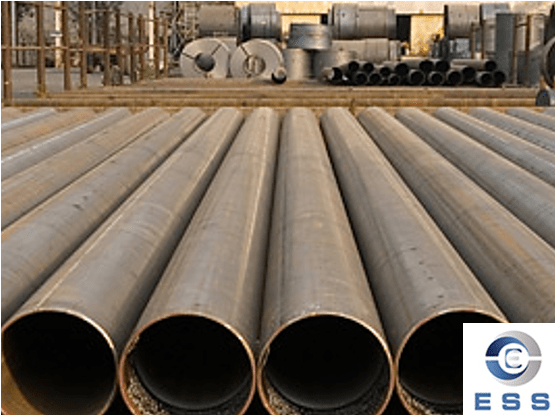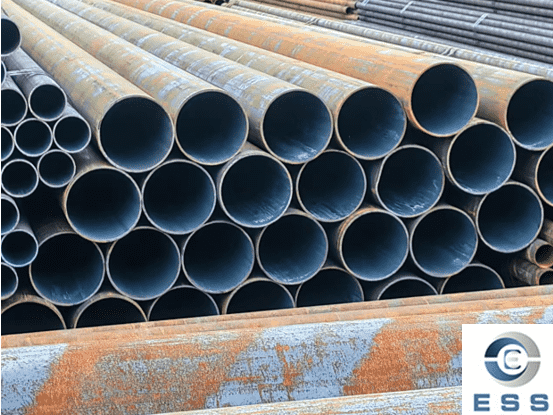Processing and connection of different pipelines
The processing and connection of pipes(
seamless pipe or
welded pipe) is an important part of the installation project. It is an important process of converting the engineering design into an engineering entity and connecting each pipeline equipment into a system.
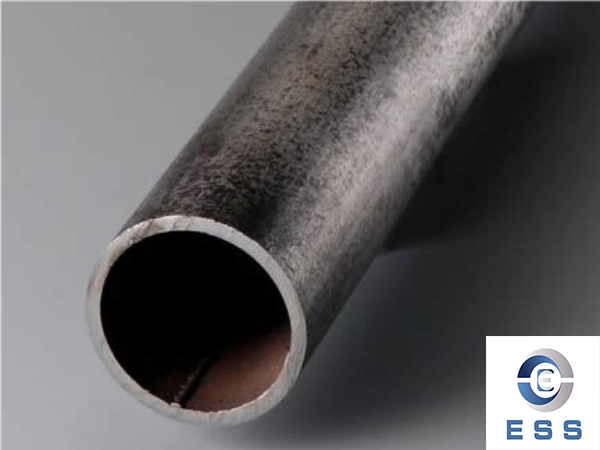
Pipe straightening and cutting:
1. Pipe straightening
Cold straightening, smaller pipe diameter, little bending degree DN<50;
Thermal straightening, larger pipe diameter, larger bending degree DN>50.
2.Tube cutting
Purpose: Cut the pipe into pipe sections according to the size and shape required for pipeline installation, also known as blanking.
Require:
a. Accurate size;
b. The cut is smooth and free of cracks, heavy skin, burrs, unevenness, shrinkage, slag, oxides and iron filings, etc.;
c. The cut section is perpendicular to the axis of the pipe, and the tilt deviation Δ should not be greater than 1% of the outer diameter of the pipe and not exceed 3mm.
Method: manual cutting, mechanical cutting.
Applicable places: Manual cutting: small pipe diameter cutting, construction site;
Mechanical cutting off: factory floor, large diameter pipes.
Commonly used tools and equipment:
1. Small pipe cutting machine cutting:
Hacksaw: manual on-site operation, DN<50, high labor intensity, slow speed, non-shrinking incision and flexible.
Hob pipe cutter: fast speed, straight cut, but shrinkage occurs, which needs to be scraped with a razor blade. It has low labor intensity and is suitable for use on construction sites.
Grinding wheel cutting machine: fast speed, straight cut, no shrinkage, loud noise, suitable for on-site use.
2.Oxygen-acetylene flame cutting
Suitable for large-diameter pipes DN>100, low labor intensity, smooth cutting, and can also cut steel plates 10 to 100mm thick, using oxygen and acetylene gas.
3. Large mechanical pipe cutting machine cutting:
Suitable for cutting large-diameter pipe fittings and completing bevel processing. DN75~DN600, δ=12~20mm thick.
4. Pipe chisel cutting: suitable for cast iron pipes, clay pipes and concrete pipes.
5. Plasma cutting: Plasma cutting is used, which is fast, small and straight.
Under the high temperature of the arc, the gas is ionized into electrons and positive ions, and the plasma becomes a high-temperature and high-energy 15,000°C warm air flow through thermal and magnetic contraction effects.
Pipe thread processing:
1.Pipe thread
The threads used for threaded connections in pipes are called pipe threads. Different from the threads of ordinary bolts, pipe threads are inch threads. To ensure the strength of the pipe after thread processing, pipe threads are all made of fine threads.
The outer end of the steel pipe is threaded, and pipe fittings or valves with internal threads are screwed on to form a pipeline system. It is used in places with DN ≤ 65, especially DN 15 to 40, and places that require regular maintenance and disassembly.
Pipe thread:
Cylindrical shape - the thread depth and thread diameter of each turn are equal, and the tightness is poor, making it easy to process internal threads of pipe fittings.
Conical shape - the diameters of the threads in each circle are not equal, and form a frustum from the scraper at the end. The tighter the threads are, the outer threads of the steel pipes with tight interfaces are all conical.
Pipe thread connection:
Taper to column: The most commonly used connection between cone and thread and cylindrical internal thread.
Column to column: Pipe applications are small, and bolts and nuts are commonly used.
Cone to cone: It is difficult to process internal cone threads and is only used in medium and high pressure pipelines with strict requirements or in oil and gas pipelines.
2. Pipe thread processing
Artificial silk threading, manual threading and electromechanical threading. There are sequence requirements for the wrench teeth. Each set of wrench teeth can fit two pipe diameters, and the pipe diameter determines the wrench teeth.
Mechanical threading, electric threading machine threading is used for external threads.
Lathe processing, thread lathe processing is used for internal threads.
3. Protection of pipe mouth threads
Use pipe hoops or plastic tubing to tie it up.
Purpose: To prevent the threads from being damaged during transportation.
If it needs to be left aside after processing, apply waste engine oil and protect it to prevent rust.
Bevel of steel pipe:
1. Form of bevel:
Purpose: To ensure the welding quality, ensure the quality of the weld seam, and ensure that the weld seam reaches a certain degree of melting.
The groove spacing and specifications are stipulated by national standards, and the spacing is generally 0.35 to 0.4 of δ.
Divided into: V-shaped, X-shaped, double V-shaped and U-shaped, etc.
2.Bevel processing
The bevel of the short pipe of the high-pressure pipeline is processed by a lathe;
The beveling of long pipes is processed by a mobile beveling machine;
Alloy steel high-pressure pipelines should not use oxygen-acetylene flame cutting method as much as possible.
The groove angle is too large: a waste of welding rods and unstable mechanical properties.
The groove angle is too small: it is difficult to weld through.
3. Protection of pipe end bevel
Pipe fitting production:
Molded elbow: seam molded elbow,
seamless elbow;
Welded elbow: suitable for the production of elbows with larger diameters and smaller bending diameters.
Hot push elbow: can ensure uniform wall thickness.
Corrugated elbow: used for elbows with a nominal diameter of 100 to 600mm and a pressure not exceeding 2.5MPa.
tee pipe production
Extrusion tee: compound extrusion and positive extrusion.
Welding tee: elbow type, right angle type and flat welding joint.
Reducer pipe production
Outsourcing or on-site production according to standards: welded reducer; reduced diameter reducer; steel plate rolled reducer.
Bend pipe processing:
Quality requirements: Even bending, no defects and wrinkles.
The difference between the maximum outer diameter and the minimum outer diameter on any bend section shall comply with the regulations.
Specification for wall thickness before and after forming elbows.
Pipe end center deviation specification.
The main factor affecting the quality of bent pipes is the bending radius R.
Analyze the pros and cons of R value, in terms of force and resistance:
Large R, small resistance, large space occupation, unsightly appearance, and high strength;
Small R, large resistance, small space occupation, beautiful appearance and low strength.
The value of R: 1.5~4D.
Mechanical simmering and bending: hot simmering R=3.5D, cold simmering R=4D. Stamping elbow R=1.5D, welding elbow R=1.5D.
Bend pipe processing method:
1) Manual cold bending method, special pipe bending tools.
2) Mechanical cold bending method, electric pipe bending machine. Coreless cold-formed elbow; cored cold-formed elbow.
3) Pipe filling with sand and hot simmering method.
4) Mechanical heat bending method, flame pipe bending machine.
5) Stamping elbow: plate pressing: seam elbow, with British pipe section, smaller.
Pipe section pressing: seamless bent pipe, with standard R=1~1.5D and flange pressure matching, 4MPa, 64MPa, 80MPa.
Advantages: ① Factory production; ② Low labor intensity; ③ Small radius of curvature; ④ Cheap price.
6) Welding elbow, Xiami bend.
Use steel pipe welding: 90°, two sections, three sections, four sections, six sections.
Pipe connection:
Basic methods of steel pipe connection:
|
Threaded connection
|
DN≤65
|
|
Welding
|
All pipe diameters
|
|
Flange connection
|
Valve and equipment connections
|
Steel pipe threaded connection
The outer end of the steel pipe is threaded, and pipe fittings or valves with internal threads are screwed on to form a pipeline system. It is used in places with DN ≤ 65, especially DN 15 to 40, and places that require regular maintenance and disassembly.
Common tools and fillers for pipe thread connections
1. Tools: Pipe wrench, divided into open type and chain type. The open type is shown on page 37 of the old book. The chain type is widely used for large pipe diameter and operation in trenches.
The selection of pipe wrench should be based on different pipe diameters. A small pipe with a large pipe wrench will damage the pipe fitting; a large pipe with a small pipe wrench cannot be tightened tightly and the pipe wrench will be damaged.
2. Filling materials
Function: Increase the tightness of pipe interfaces, prevent corrosion, and facilitate loading and unloading.
type:
① Dip hemp silk into white lead oil (lead lead powder mixed with dry oil), polytetrafluoroethylene tape, low-temperature water pipe, water supply 95℃, return water 55℃.
② Black lead oil (graphite powder mixed with dry oil) and asbestos rope, high-temperature water heating pipes, water supply 110℃~130℃.
③ Mix Huangdan powder with glycerol-oxygen pipe.
④ Lead oxide powder mixed with glycerin-ammonia pipeline.
Threaded connection method
1. Short wire connection
2.Filament connection
3. Union connection
4. Root and mother connection
Threaded mounting requirements
When installing the thread, the thread at the pipe end should be screwed into the connected part 2 to 3 times by hand first, and then tightened with pipe pliers.
The exposed thread should not be too long, leaving 2 buckles is appropriate.
The packing used in the connection should be selected according to the medium transported by the pipeline to achieve the tightness of the connection.
After the elbow is connected, the linoleum filler squeezed out should be cleaned up.
Selection of bolts
Select bolts and nuts according to relevant standards.
The length of the bolt should be greater than half the diameter of the bolt and should be 2 to 5 wires higher than the nut.
In general:
|
|
PN≤0.6MPa
|
Rough bolts
|
|
|
|
0.6MPa≤PN≤0.6MPa,t≤350℃
|
Semi rough bolts
|
|
|
|
2.5MPa≤PN≤20MPa,t>350℃
|
Refined bolts
|
|
In large-diameter steel pipe medium and high-pressure pipeline systems, flange connections are often used to connect valves and pipeline ancillary equipment to pipelines.
Connection requirements:
1. Flange specifications, pressure resistance, working temperature, and welding form of flange and pipe sections must be clearly specified in the design drawings; if the design drawings do not clearly specify the flange specifications, the selection must be made according to the flange standard table.
2. The center of the flange and the center of the pipe should be in a straight line.
3. The flange sealing surface is perpendicular to the central axis of the pipe.
4. The screw holes on the two connected flanges should be consistent, and the flange screw holes on both ends of the same pipe should be consistent.
Features of flange connection: high bonding strength, good tightness, easy disassembly and installation.
Flange composition: flange plate, bolts.
Flange material: steel plate, stainless steel plate, cast steel, cast iron, plastic.
type:
Flange and pipe connection methods: flat welding flange, butt welding flange, flange flange, threaded flange.
Flange standards: HG5008~5028-58, SYJ4-64, JB78~85-59, GB2555-81.
Flange specifications: structural dimensions of various flanges under nominal pressure
PN≤0.25MPa, 0.6MPa, 1.0MPa, 1.6MPa, 2.5MPa, 4.0MPa.
Applicable locations for connection methods
Threaded flange: suitable for connection of steel pipes and cast iron flanges, galvanized pipes and steel flanges, and different materials.
Flat welding flange: the most widely used, welded to pipes.
Butt welding flange: used on high-pressure pipelines, made of cast steel.
Flange flange: used in places that require flange movement to facilitate alignment. It can also be used for the connection of cast iron flanges and steel pipes, steel flanges and non-ferrous metal pipes.
Flange connection requirements:
The difference between the maximum gap and the minimum gap on the disk surface should be within the specified range to ensure that the flange surfaces are parallel to each other and the interfaces are tightly pressed.
DN↑, gap ↑; Pn↑, gap ↓.
Flange gasket: The thickness is generally 3~5mm, and the material is related to the media property parameters.
Rubber sheet: used for water, steam, acid and alkali liquids PN0.6~1.0MPa, not more than 120℃, generally below 60℃.
Asbestos rubber sheet: used for water, steam, air, oil, gas, etc. PN1.6~10MPa≤450℃.
Plastic plate: used for water, air, acid and alkali solutions PN≤0.6MPa≤50℃.
Copper and aluminum plates: used for high temperature, high pressure steam and oil PN≤20MPa≤600℃.
Flange sealing surface form
1. Smooth type: mostly used for flat welding flanges, commonly used P≤1.6MPa.
2. Concave-convex type: mostly used for butt welding flanges, high temperature and high pressure P≤10.0MPa.
3. Tongue and groove type: used for pipes with high temperature, high pressure and requiring tight sealing.
Welding of steel pipes
Welding principles and advantages
Principle: Heat the pipe interface and the welding rod to reach a molten state, so that the two welded parts are connected into a whole.
Category: manual arc welding, oxyacetylene gas welding, argon arc welding, plasma welding, cold pressure welding, spot welding, etc.
advantage:
1. The interface is firm and tight, δh≥0.85δg.
2. Simple structure, beautiful pipeline and saving on pipe fittings.
3. The welding joint is tight without filler, reducing maintenance work.
4. Welding is not limited by pipe diameter, is fast and has low labor intensity.
Welding method
1. Gas welding, oxygen and acetylene welding: C2H2+O2 welding temperature 3100~3300℃
composition:
① Calcium carbide CaC is added with water to generate C2H2. CaC+H2O→C2H2↑+Ca(OH)2+heat
②Oxygen purity 98% pressure 15MPa cylinder (sky blue)
③The composition of the welding rod and the steel pipe to be welded must be consistent.
④ Acetylene generator (carbide barrel) Bell-type acetylene generator is now mostly replaced by acetylene gas.
⑤ Oxygen cylinder and regulator, 15MPa oxygen is adjusted to 0.3~0.5MPa. Oxygen cylinders and acetylene cylinders should be separated by more than 5 meters.
⑥ High-pressure hose, oxygen pipe 2MPa, acetylene gas pipe 0.5MPa pressure test.
⑦Welding gun, gas mixing, generating flame, welding, adjusting the gas volume to adjust the flame size.
Purpose: When the pipe diameter is small and the wall thickness is thin, gas welding is commonly used.
2. Electric welding
According to the degree of automation, it can be divided into:
Manual arc welding: workpieces with small and medium wall thickness that are inconvenient for automatic welding.
Automatic welding: large and medium diameter pipe openings, workpieces with regular weld seams.
According to welding machine type:
DC welding machine welding: stable current and good welding quality, stainless steel welding.
(Welding generator) Small current, thin parts, often used for alloys and non-ferrous metals with polarity requirements.
AC welding machine welding: convenient power supply, low cost, general welding.
Gas shielded welding, argon arc welding (using argon gas to protect the weld): used for stainless steel and alloy welding.
Pressure welding: Using high pressure to press weld the parts together.
Spot welding: Use electricity to generate high temperature to spot weld the welding parts together.
Welding method
According to its operating position, it is divided into: flat welding, vertical welding, horizontal welding and overhead welding.
① Flat welding: conventional welding.
② Vertical welding: Welding should be done from bottom to top, with thinner electrodes and smaller current.
③Overhead welding: top welding, difficult to operate, thin electrode, smaller current, short arc, intermittent welding, overhead welding current should be 10% to 20% smaller than flat welding current.
Electric welding selection
Electric welding: fast, economical, commonly used, t≥4mm compared with the original, small deformation, easy to operate.
Gas welding: thin parts, low-temperature pipes t≤-30℃, anti-weld shrinkage deformation cracks, heating DN≤50, δ≤3.5.
Welding quality inspection
1. Appearance inspection: Use the naked eye or a magnifying glass to observe the welding seam thickness, uniform thickness, neatness, whether the size meets the standards, and whether there are slag inclusions, pores, cracks at the welding seam, and whether there are any residues on the inner and outer surfaces of the pipe. Crater welding flash.
2. Non-destructive inspection of welds
(1) X-ray and ultrasonic inspection are suitable for pressure pipelines.
(2) Weld penetration test, large container production.
(3) Hydraulic pressure test, Ps=1.25~1.5Pg, pipeline engineering, overall engineering.
3. Strength test
Randomly check 5% for strength test, position extension and static bending test.
δh≥0.85δg (MPa)
δh=0.01P/F (MPa)
δh Weld tensile strength MPa
δg workpiece tensile strength MPa
P tensile test destructive force N
F Weld cross-sectional area cm2
Bend test method: When the bending angle reaches 70°C (gas welding) or 100°C (electric welding), it is qualified if there are no cracks on the bending surface.
Welding of plastic pipes
Use heat to melt plastic and join plastic pipes or fittings together.
It can be divided into: hot air welding, ultrasonic welding, high frequency welding, induction welding and friction welding, etc.
Hot air welding is most commonly used in construction equipment.









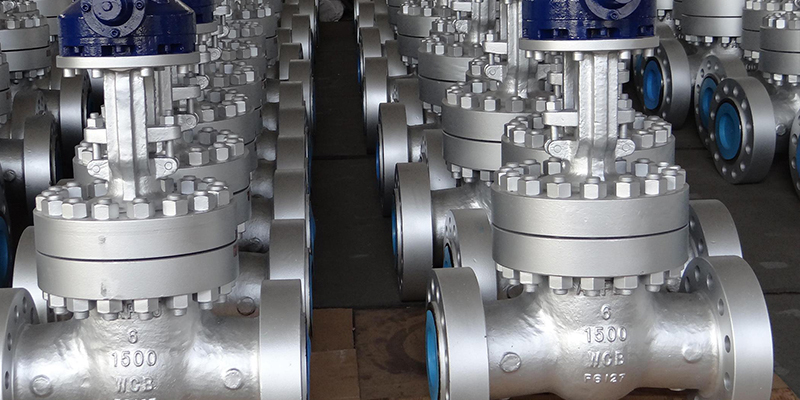
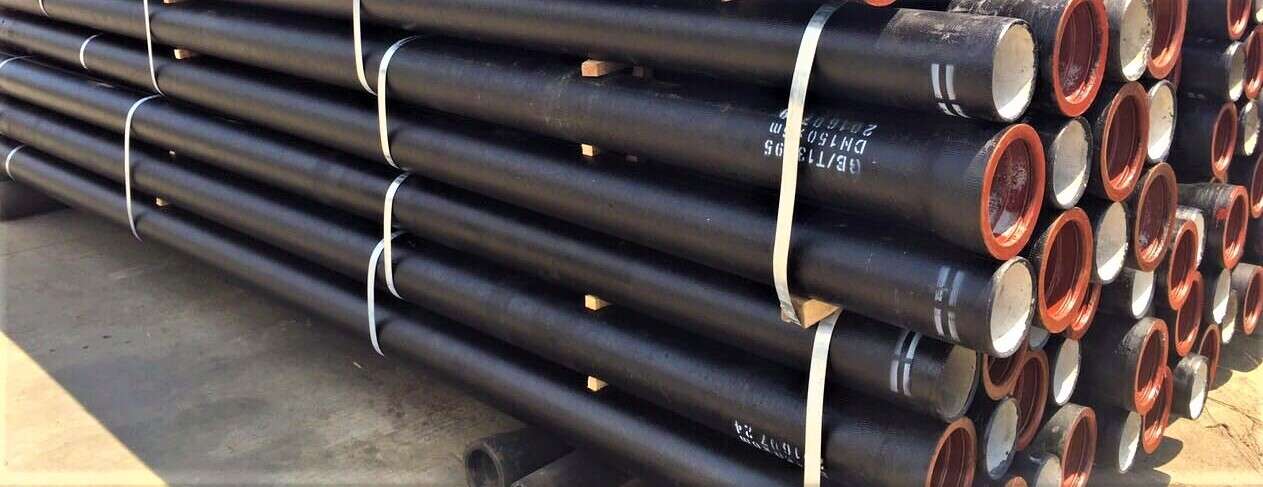


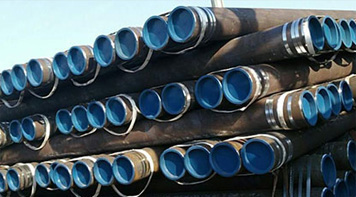 Eastern Steel Manufacturing Co.,Ltd not only improve product production and sales services, but also provide additional value-added services. As long as you need, we can complete your specific needs together.
Eastern Steel Manufacturing Co.,Ltd not only improve product production and sales services, but also provide additional value-added services. As long as you need, we can complete your specific needs together.
